On the Method Behind Beyoncé's Multiple-Personality Madness
The importance of being Sasha Fierce
By Nana Ekua Brew-Hammond
Tuesday, December 16th 2008 at 1:02pm
It was August 2006, and Beyoncé Knowles was holding court at Sony's Hit Factory, doing press for her second solo album, B'Day, and her first Oscar-seeking Hollywood vehicle, Dreamgirls. The film remake of the Broadway musical about the breakup of a Supremes-like girl group starred the former Destiny's Child frontwoman as Deena, a Diana Ross figure who emerged as the group's focal point and moved onto a wildly successful solo career after a dramatic split. But when one journalist alluded to the parallels between the star and her character, Beyoncé smoothly preempted the discussion, singing her real-life former bandmates' praises and even adding a gracious nod to DC alumnus LeToya Luckett, whose single, "Torn," had just hit #1.
She went on to insist she was completely different from the meek, puppet-like Deena and even the over-the-top persona she embodied onstage: "I don't like to wear makeup as much—I mean, I like to dress up, but there's a time and a place for it," she said, rocking a black cocktail dress with stacked-heel patent loafers. "I love to sleep late, play with my nephew, and eat food. Bad food. I'm just like any other woman."
Except most other women don't have a bad-girl alter ego they publicize. Eminem had Slim Shady, Garth Brooks (briefly) had Chris Gaines, and in Sasha Fierce, Beyoncé has her own dirty doppelgänger who allows her to turn the lights off and promote a grittier, more dangerous side of herself. Back then, just as Internet rumors about a romance between then-boyfriend, future-husband Jay-Z and ascendant pop star Rihanna had reached a fever pitch, the vicious B'Day track, "Ring the Alarm," found Beyoncé screeching, "Ring the alarm! I'll be damned if I see another chick on your arm!" This, evidently, was the ballsy, powerhouse, sex-symbol Sasha talking. "I don't know if it would be as entertaining onstage if it was just me," she told us. "I've created this other person, so I can keep them separate and still maintain all the qualities that make me who I am."
And what are these qualities? The unanimous consensus is "dignified," "humble," "sweet," "polite," "reserved," "thoughtful," "detail-oriented," "professional," "gracious," "assertive," "unassuming"—oh, and "really, really, really, really nice," according to Essence writer Jeannine Amber, who's interviewed Beyoncé multiple times. Entertainment Weekly staff writer Margeaux Watson concurs, noting that even at raucous parties, Beyoncé is perfectly poised. "I met her a couple of times just socially with Jay, and she was always super-polite and very professional, almost. When I've seen them together, he's out front. She just stands by her man. I don't know if that's a Southern thing, but she's not 'Sasha Fierce.' "
Now, with her third release, the double-CD I Am . . . Sasha Fierce, Beyoncé is trying to be both. She segregated her ballads to the first half (I Am . . .), presented as the thoughtful, soft-spoken side of her personality, distinct from the explicit, in-your-face anthems on disc two, Sasha Fierce. Sonically, the result is schizophrenic and lopsided, heavily tipped in the latter's favor. For the former, she moves away from the tightly edited thematic throughline that's worked in the past. If 2003's Dangerously in Love gave voice to the out-of-body experience of falling in love—while B'Day focused on the anguished howls of a scorned, lovesick woman—this time, she hopscotches between balladic genres, from the opera-tinted "Ave Maria" to the folksy "Disappear" to romantic-comedy soundtrack fare like "Broken-Hearted Girl" and "Smash Into You." This half of the album seems more focused on proving that Beyoncé can do more than the hip-hop-flavored r&b tracks she's best known for, but less focused on what she actually has to say. The tracks by themselves are great one-offs, but would've fared better if shelved until each single could become part of a cohesive whole.
Sasha Fierce suffers no such identity crisis. Brassy, big-headed, confrontational, and witty, each incendiary track challenges you to leave your inhibitions at coat-check. Starting with the call-and-response anthem "Single Ladies (Put a Ring on It)," Beyoncé moves on to flirt outrageously with "Ego" ("He got a big ego/He walk like that 'cause he can back it up") and "Video Phone," further identifying herself as a "diva" (defined as "the female definition of a hustla"). But even amid all the racy braggadocio, tracks like "Radio" (which introduces a sistah-gurl inflection to her voice) and "Hello" (whose chorus echoes the infamous "You had me at hello" line from the mother of all rom-coms, Jerry Maguire) show Sasha's just a good girl playing fierce.
"Beyoncé is one of the purest souls I know," says Stephanie Gayle, who worked with Destiny's Child at Columbia Records. She remembers trying to convince the budding star to stop suppressing her inner Sasha—though back then, Gayle and Beyoncé had a different, secret name for the fiery persona who'd take over onstage. "The most beautiful thing to me has been to see her slowly but surely letting go," Gayle says, "so that now we have this amazing supernova in front of us—because in the beginning, she did have to hold back, whether she was conscious of it or not."
The evolutionary process has been meticulous. Thembisa Mshaka-Morris, an author and former Sony copywriter who worked as part of the Destiny's Child advertising juggernaut, credits both publicist Yvette Noel-Schure and Beyoncé's manager and father, Mathew Knowles, for grooming the star to control her press coverage and image. "Yvette really helped them all understand the importance of making the media work for you," she says. "It's about being a star, not a celebrity. The celebrity thing is very temporary and fleeting. Stars don't really want to be known stitch for stitch. Celebrities are clamoring for that applause. That's not where Beyoncé is coming from."
She adds that Mathew's involvement was instrumental in shielding the girls from being compromised; fiercely protective of his daughters and the Destiny's Child members he mentored, Knowles now says he'd tell any parent of a showbiz kid to "take the time to learn the business—it's not for every parent. Make sure you have the tools."
Clearly, that approach has rubbed off on his most famous daughter. "She's a really shrewd businesswoman," remarks Kenya Hunt, global fashion editor for the Metro International newspaper chain, who first caught up with Beyoncé back in 2003, when she was touring with Destiny's Child and simultaneously promoting Dangerously in Love. Immediately after a show in Minneapolis, the star held a postmortem with the group's road manager backstage. "She wasn't being a diva or anything—she was just being a businesswoman," Hunt recalls. "Almost like how a manager would be in an office, in terms of just acknowledging what worked and what didn't. She didn't alter the tone of her voice to sound apologetic. She was just all business." Essence's Amber remembers a similar post-show moment during a Euqropean tour: "She called the meeting and started talking about 'This light needs to be two feet out to the left'—that type of detail."
This is the discipline and business acumen that Beyoncé is bringing to her goal of winning an Oscar. (Dreamgirls, after all, earned a statue for Jennifer Hudson—in a grittier, flashier role.) The excellent new Cadillac Records, co-starring Jeffrey Wright and Adrien Brody, charts the rise and fall of legendary Chicago "race music" label Chess Records; writer/director Darnell Martin says she envisioned the role of Etta James specifically for Beyoncé. Martin raves that the star held her own among such Oscar-caliber talent, willingly shedding her "glamour girl" image and even her salary to make the budget work. "She put her money, her soul, her everything where her mouth was," Martin says, marveling at the young star's eagerness to gain weight, smear her makeup, and summon the grit to convincingly portray a troubled artist who struggles with heroin addiction. "We've never seen her go there before."
It's true that the singer's performance is brave, strong, and much matured from her "smile, look pretty, and sing" turns in The Pink Panther or Austin Powers in Goldmember. She does those things in this movie, too (well, she doesn't smile), but when she shows up an hour into Cadillac, her control is clear, and she begs tears from your eyes with her naked rendition of James's "All I Could Do Was Cry." At other points, though, she over-performs, gesticulating like she's seen junkies behave in other movies, but not fully lost in this one: You never forget it's Beyoncé in that shaggy blond wig and "jelly"-hugging dress, even when her character's supposed to be in a heroin-induced stupor. From her on-set vantage point, however, Martin considers the performance otherworldly: "When I called 'cut,' you could see that she was somewhere else. Adrien said, 'Yeah, you got to that place.' "
Beyoncé's ability to meet her stated goal of becoming the first African-American woman to win an Oscar, a Tony, and a Grammy depends on moments like this, which makes the Sasha bifurcation a smart contrivance. By defining the "real" Beyoncé as the poised balladeer and setting apart the powerhouse performer her fans have come to expect, she's telling her audience, "See? I've been acting all along." With that in mind, the genre-schizophrenia of I Am . . . makes sense. Casting herself in multiple aural roles, Beyoncé's attempting to show moviegoers that she truly has range. If she can sing opera and play Sasha Fierce, she can play Etta James, dammit.
But if she's been playing all along, who is the real Beyoncé? Mathew tells us the difference between his daughter and her alter ego is simple: "Beyoncé is the quiet artist, and Sasha Fierce is more daring." Rap-Up editor Devin Lazerine thinks: "Sasha Fierce is everything Beyoncé is not, and everything she is afraid to be and say." But I think the artist is who she tells us she is on this album, albeit with the hesitant caveat of an ellipsis. She is . . . Sasha Fierce; as Aaliyah so eloquently put it, "Sometimes, I'm goodie-goodie/Right now, I'm naughty-naughty."
Nonetheless, it's understandable why a careful superstar with Texas churchgoing roots feels the need to detach herself from her more aggressive side. "We are not allowed to have egos," Martin says of female artists. "Because that's unwomanly, unfeminine." Watson agrees with a chuckle: "Sasha Fierce would be a bit of a hot mess in real life. She'd probably be dancing on tables." So Beyoncé partitions and packages each one-dimensional fantasy—the lady and the vamp—even as she breaks out of them. Because what's implicit in all this marketing is the astute businesswoman she is, ready to discuss exactly where that light needs to be after the show. Now, she's ready for a different kind of close-up.







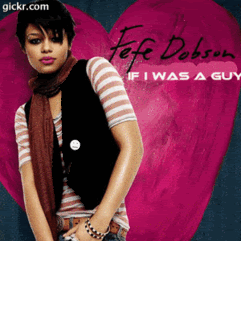






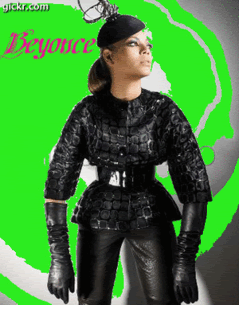





















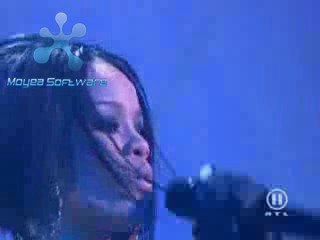

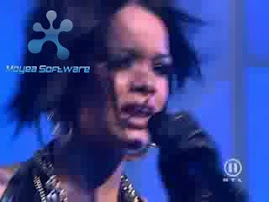
































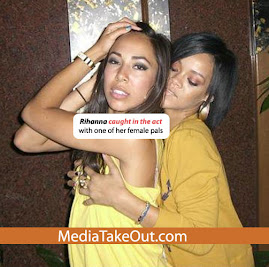





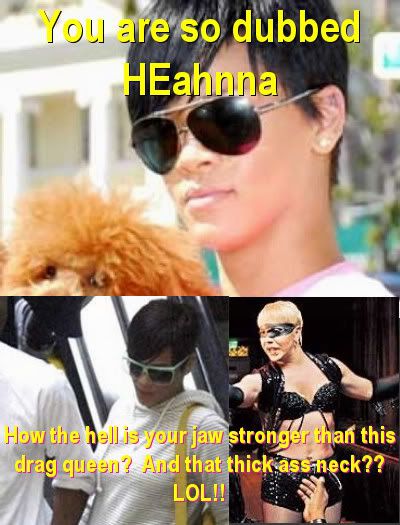
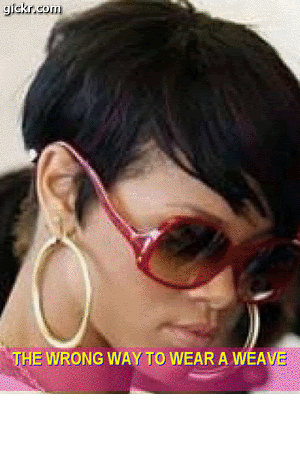
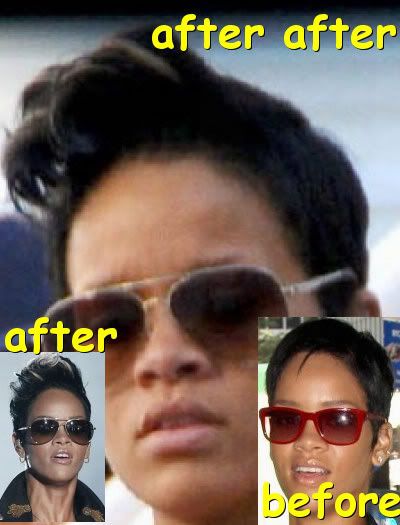
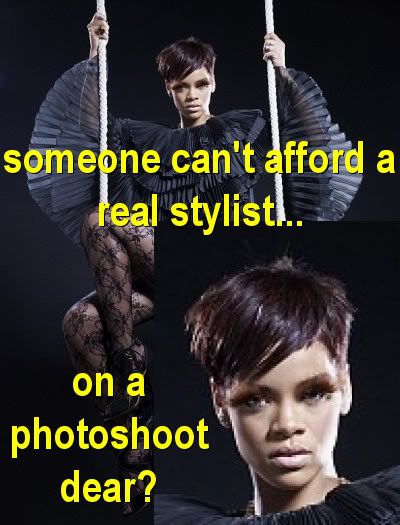




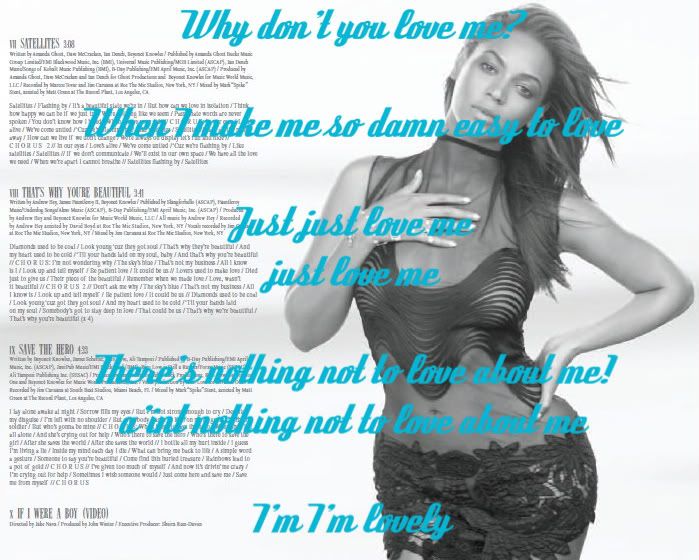


No comments:
Post a Comment
As is implied and emphatically stated, this blog is in regards to the lack of talent and all that is the boring cloned puppet rihanna. If it upsets you...... TOUGH...... jaw juggle some ballz bitchez. :-) feel free to comment